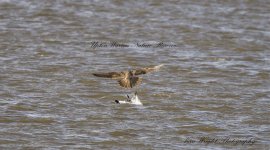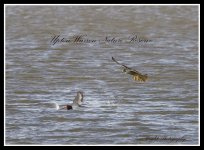Flashes and sailing pool
From 12.30pm - 5.30pm.
Flashes
The south easterly breeze made for uncomfortable birding from the hides, with the rain driving in.
Most people who have visited the Flashes recently, have commented, "how quiet and disappointing it is". This has always been the case during winter and is the reason why we started the feeding station back in the mid 80's - to try and keep birders interest in the area, during his period.
A lot of passerine activity along the track from behind the hen pool to the feeding station. Treecreeper, blue tit 25, great tit 10, long tailed tit 5, greenfinch 10, Bullfinch 6, chaffinch 5, goldfinch 6, dunnock 5, robin 3, blackbird 3, song thrush, wren, reed bunting 5,
Also feeding around the Feeding station: coot 2 moorhen 8, mallard 8.
Onto the main hide, where there was only a handful of teal on show, but after a while more started to appear.
The sewage meadow however, was alive with bird activity. The cattle have now created an ideal looking wet grazing marsh, of short grass interspersed by clumps of juncus and tussock grass. This has provided a range of feeding opportunities for wildfowl and waders. Coot were grazing, teal and mallard with dabbling in the wetter areas, snipe, Oystercatcher and curlew were probing while the lapwing were picking at surface food.
This evening the BHG's were joined by several large gulls and a common at the roost. Also, more ducks and geese arrived at dusk, as well as a few Green sands, swelling the the ranks of those already assembled. Considering the weather, today was the best the Flashes have been for a good few weeks. But again only during the evening from 4pm onwards
Species count Flashes:Mute swan pr, Teal 58, shoveler 2, mallard 100+, shelduck pr, Coot 16, moorhen 12, canadas 40, greylag 25 over, snipe 6, lapwing 40, curlew 11, Oystercatcher, Green sand 4 roosted, BHG 520, herring gull 4 (all flew out at dark), LBBG 8, common gull (adult), jackdaw 300, stock dove 2, redwing 30, meadow pipit 5,
Sailing Pool: GCG 6, Tufted 8, pochard 2, coot 10,
FLASHES water levels. Today the level was 0.43. This is the end of June / early July level. Although evaporation at that time would dry out much of the 'saucer' and 'central area'. I have left the sluice open for the last couple of weeks during the recent wet weather. Due to flooding I was unable to close up the pipe, however today I managed to 'cap' it. We will let it fill back up to 0.5ish for the beginning of spring. Until we get settled conditions, it will be difficult to get the levels right, so rest assured that we have our eye on the situation.
ps anyone visiting the Flashes will need wellies, especially for next Sunday's WORK PARTY. (DETAILS LATER).






